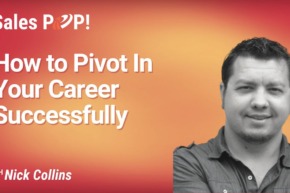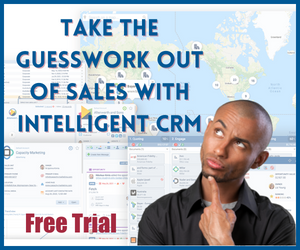Setting the right price for your B2B SaaS product can make or break your business. Yet most companies fall into the same trap: copying competitor pricing and hoping for the best. Pricing expert Dan Balcauski recently shared game-changing insights on Sales POP! Online Sales Magazine, revealing why traditional approaches fail and how smart leaders build profitable pricing strategies.
The Fatal Flaw of Competitor-Based Pricing
Most SaaS startups use a “finger in the wind” approach—they check competitor prices and adjust slightly up or down. This strategy creates critical blind spots:
- Value disconnect: Pricing becomes detached from actual customer value
- Lost differentiation: Unique products get commoditized through generic pricing
- Margin erosion: Price wars drive down profitability across markets
The winning alternative: Build pricing on customer value, not competitor mimicry. Even early-stage companies should charge something to validate real demand and gather meaningful market feedback.
The SVC Framework: Your Pricing Blueprint
Balcauski’s SVC model provides a systematic approach to strategic pricing:
Segments: Move beyond superficial categories like “small business” and “enterprise.” Develop detailed personas based on specific use cases, pain points, and value realization patterns.
Value: For each segment, clearly articulate what outcomes your product enables and how those translate to business impact.
Competition: Analyze the complete landscape—direct competitors, alternative solutions, and the “do nothing” option.
Strategy: Make intentional decisions about target segments, positioning, and pricing architecture.
Pricing Through Company Stages
Early Stage: Focus on problem-solution fit rather than pricing perfection. Never offer products completely free—modest pricing validates genuine willingness to pay.
Growth Stage: Introduce tiered pricing only when your product naturally supports differentiation. Avoid forcing “good, better, best” models without clear value distinctions.
Mature Stage: Regularly refine pricing based on market evolution. Conduct systematic reviews every 18-24 months.
Psychology-Driven Pricing Models
Three-Tier Pricing: About 70% of B2B SaaS companies use this model because it leverages powerful psychological principles—the premium tier makes middle options appear reasonable. At the same time, most customers select the profitable middle tier.
Persona-Based Pricing: Instead of linear feature scaling, design pricing around customer jobs-to-be-done. LinkedIn exemplifies this by offering packages tailored to specific professional roles rather than generic tiers.
Research Methods That Reveal Insights
Customer Conversations: Ask, “At what price would this be a bargain?” The “why” reveals crucial context about value perception and competitive positioning.
Win-Loss Analysis: If fewer than 30% of losses cite price, you may be underpricing. However, sales teams often over-attribute losses to price—dig deeper into real objections.
Warning Signs of Underpricing: Minimal price objections, immediate purchase decisions, and customers requesting invoices before seeing full proposals suggest you’re leaving money on the table.
Mastering Pricing Change Communication
A prominent AI coding assistant recently faced severe backlash—not because they raised prices, but because they communicated changes poorly. The lesson: how you communicate matters as much as the changes themselves.
Best practices:
- Test messaging with external advisors before announcing
- Provide advance notice and a clear rationale
- Monitor customer sentiment and respond quickly to concerns
- Consider grandfathering existing customers or offering loyalty pricing
Building Sustainable Pricing Governance
Cross-Functional Committees: Include product, sales, finance, and customer success teams in regular pricing reviews.
Real-Time Feedback: Create dedicated channels for immediate market intelligence through sales teams and customer monitoring.
Enterprise Considerations: Include automatic price escalation clauses in multi-year contracts—most customers accept 2-4% annual increases as standard practice.
Your Action Plan
Transform your pricing strategy with these steps:
- Audit current segmentation: Do your tiers serve distinct customer personas?
- Map value propositions: Can you articulate why each segment should pay your price?
- Conduct customer interviews using strategic questioning techniques
- Apply the SVC framework to build a comprehensive strategy
- Monitor key metrics and iterate based on market response
The Bottom Line
Strategic pricing transforms SaaS businesses from price takers to value leaders. Companies implementing customer-centric pricing typically see 15-25% revenue growth in the first year, along with improved customer satisfaction through better value alignment.
Remember: pricing isn’t a one-time decision but an ongoing strategic capability. Start with these frameworks, remain flexible to market feedback, and build organizational capabilities to optimize pricing over time. The goal isn’t perfect pricing from day one, but a relatively sustainable competitive advantage through strategic value-based pricing.
Our Host
John is the Amazon bestselling author of Winning the Battle for Sales: Lessons on Closing Every Deal from the World’s Greatest Military Victories and Social Upheaval: How to Win at Social Selling. A globally acknowledged Sales & Marketing thought leader, speaker, and strategist, he has conducted over 1500 video interviews of thought leaders for Sales POP! online sales magazine & YouTube Channel and for audio podcast channels where Sales POP! is rated in the top 2% of most popular shows out of 3,320,580 podcasts globally, ranked by Listen Score. He is CSMO at Pipeliner CRM. In his spare time, John is an avid Martial Artist.








Comments